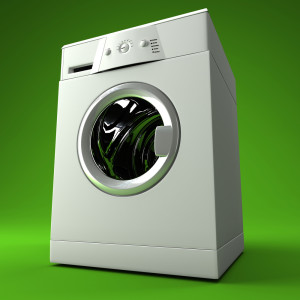Appliance Maintenance, Part Two

Clothes washers are usually connected to water supplies through hoses that will degrade with time and failure of the hose or connector union can result. Rates of degradation and vulnerability to union failure vary with hose composition and quality. Failure of a washer hose can introduce several hundred gallons of water per hour and cause extensive damage to building finishes, furnishings, and fixtures, as well as personal property.
time and failure of the hose or connector union can result. Rates of degradation and vulnerability to union failure vary with hose composition and quality. Failure of a washer hose can introduce several hundred gallons of water per hour and cause extensive damage to building finishes, furnishings, and fixtures, as well as personal property.
Washer hoses should be replaced every three to five years and they should be of the highest quality. It should be noted that hoses clad with steel braid do not necessarily perform better than conventional hoses. Most failures occur at the unions due to deterioration of their internal components, rather than high water pressure. Over time, the metal can be worn/honed (by turbulence, galvanic reaction, and other forces) to sharp edges that cut through the plastic or rubber hoses. The external braiding only affords protection against problems associated with water pressure, which is a lesser concern.
The best hoses feature multiple reinforced layers of durable materials in the hose sections and high-quality brass couplings, which are less prone to galvanic degradation. One manufacturer (Floodchek Corporation) produces such a hose and provides a twenty-year performance guarantee.
The most prudent practice would be to turn off supply valves when the washer is not in active use. At the very least, they should be turned off when away from home for longer than a day or two. Another equally effective and more convenient alternative would be to install automatic water shut-off valves that control water flow at the spigot connections. In that configuration, supply hoses are only under pressure during washer operation.
Detergents should be of the type recommended by the washer manufacturer and used in the recommended quantities. Improper and/or excessive detergent use can result in over-sudsing, possibly to a problematic degree. Suds can overflow the discharge stack into which the washer drains and can even intrude bathtubs, sinks, or toilets in spaces below
